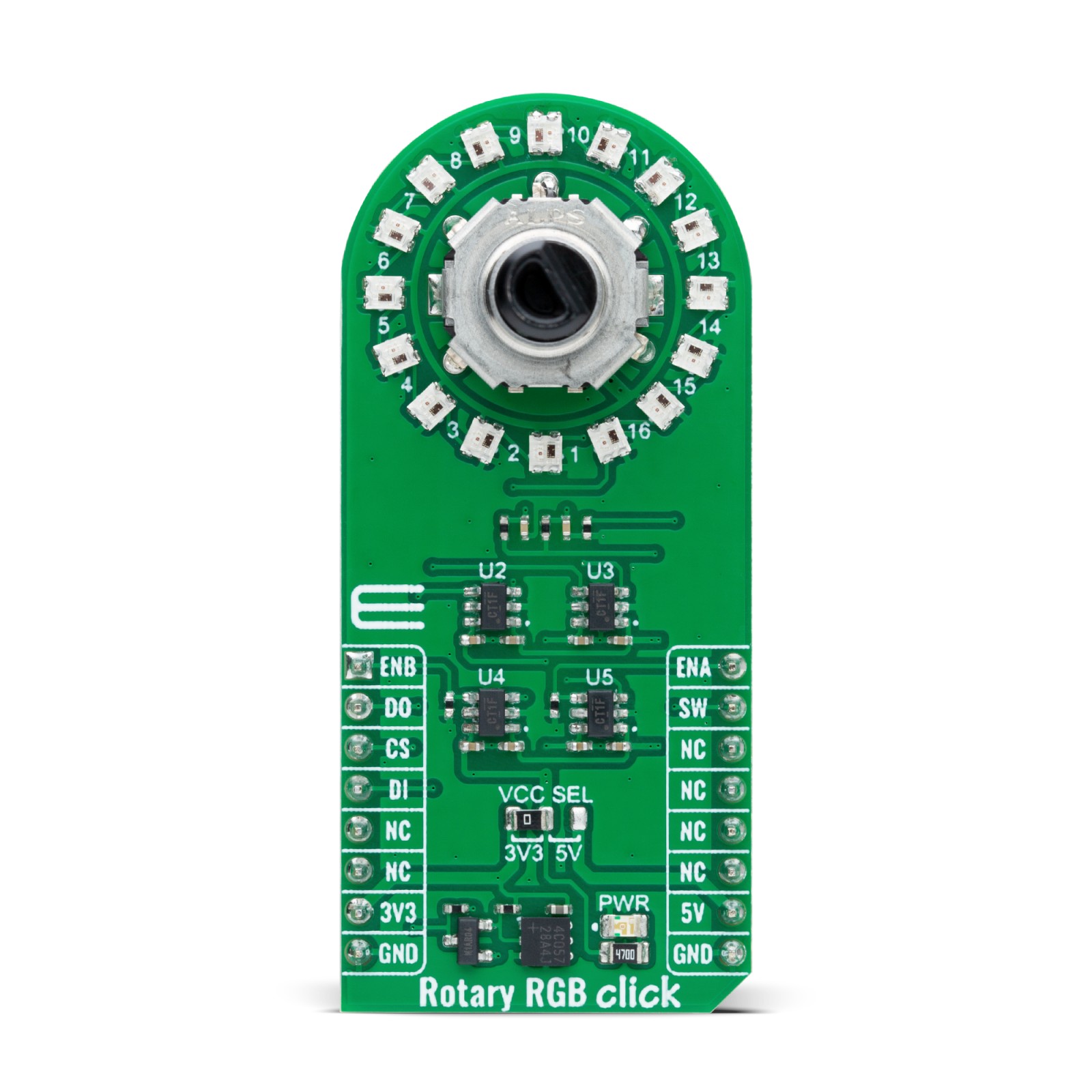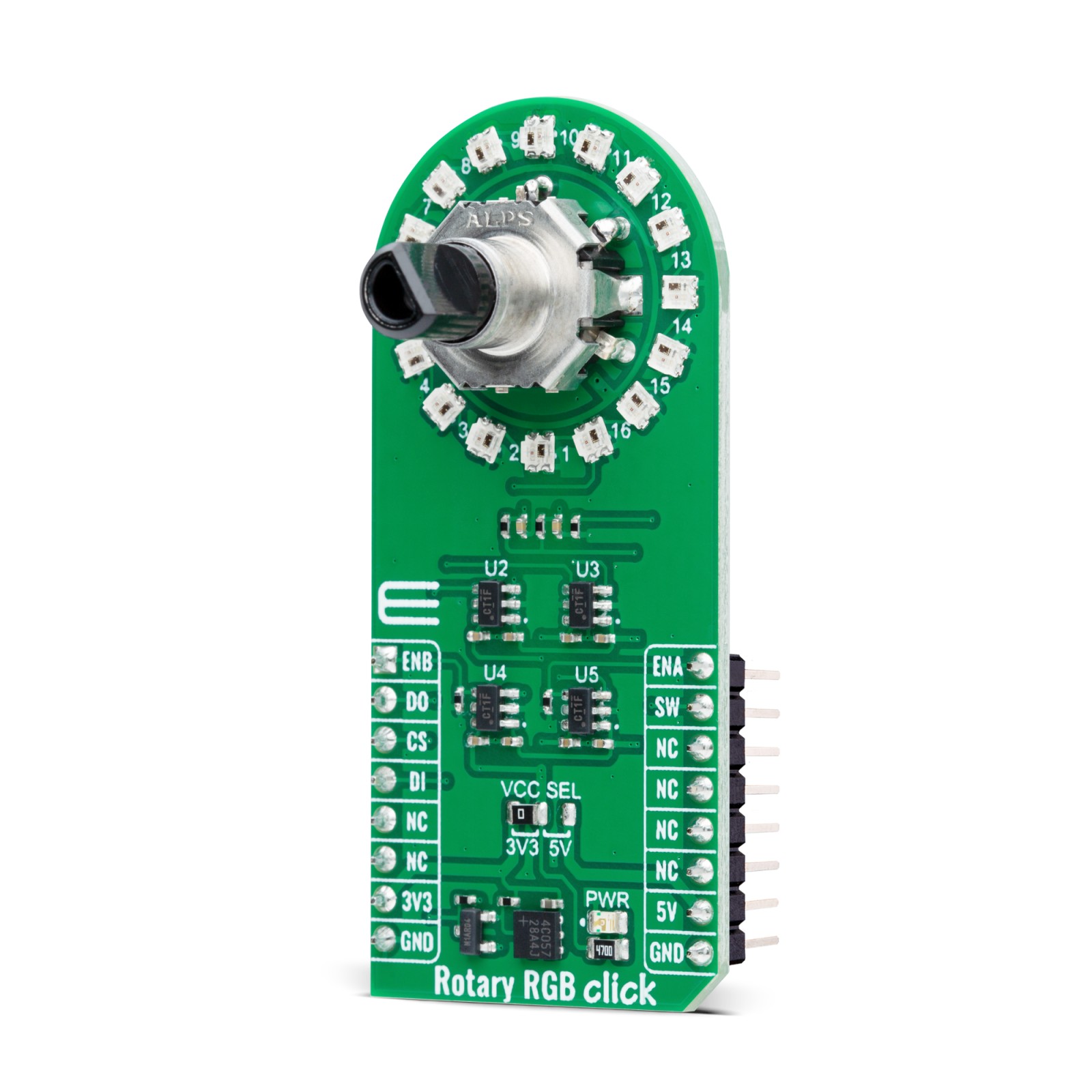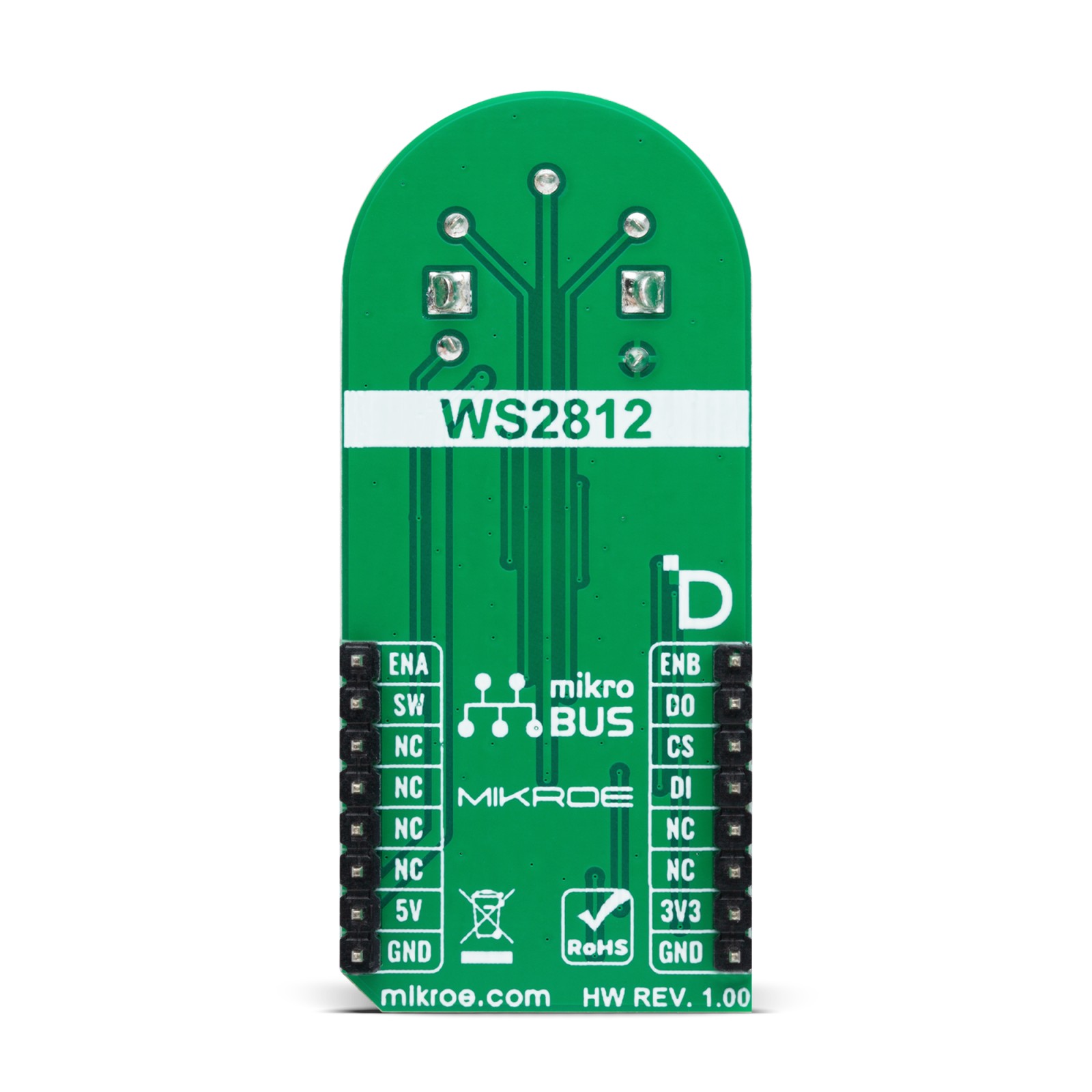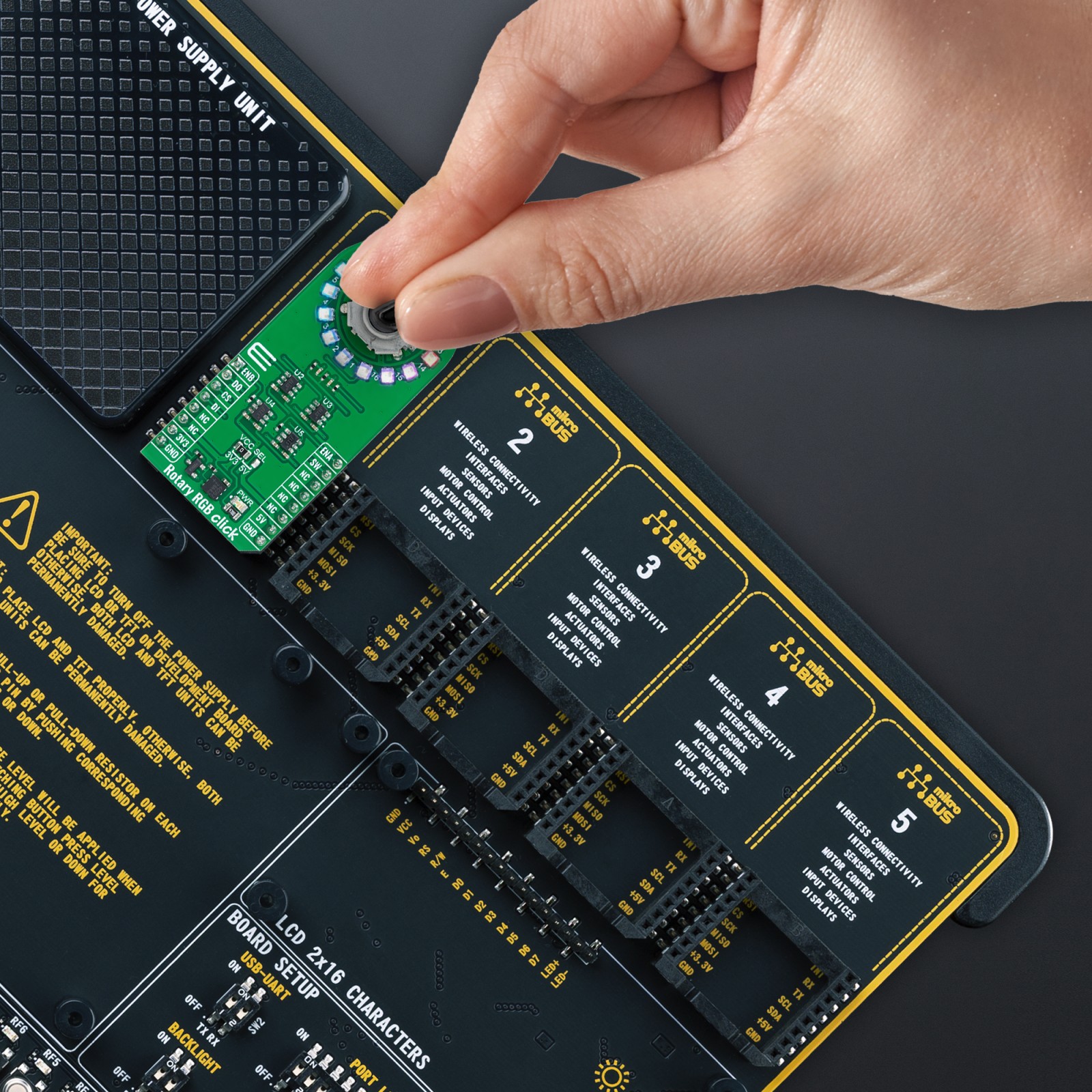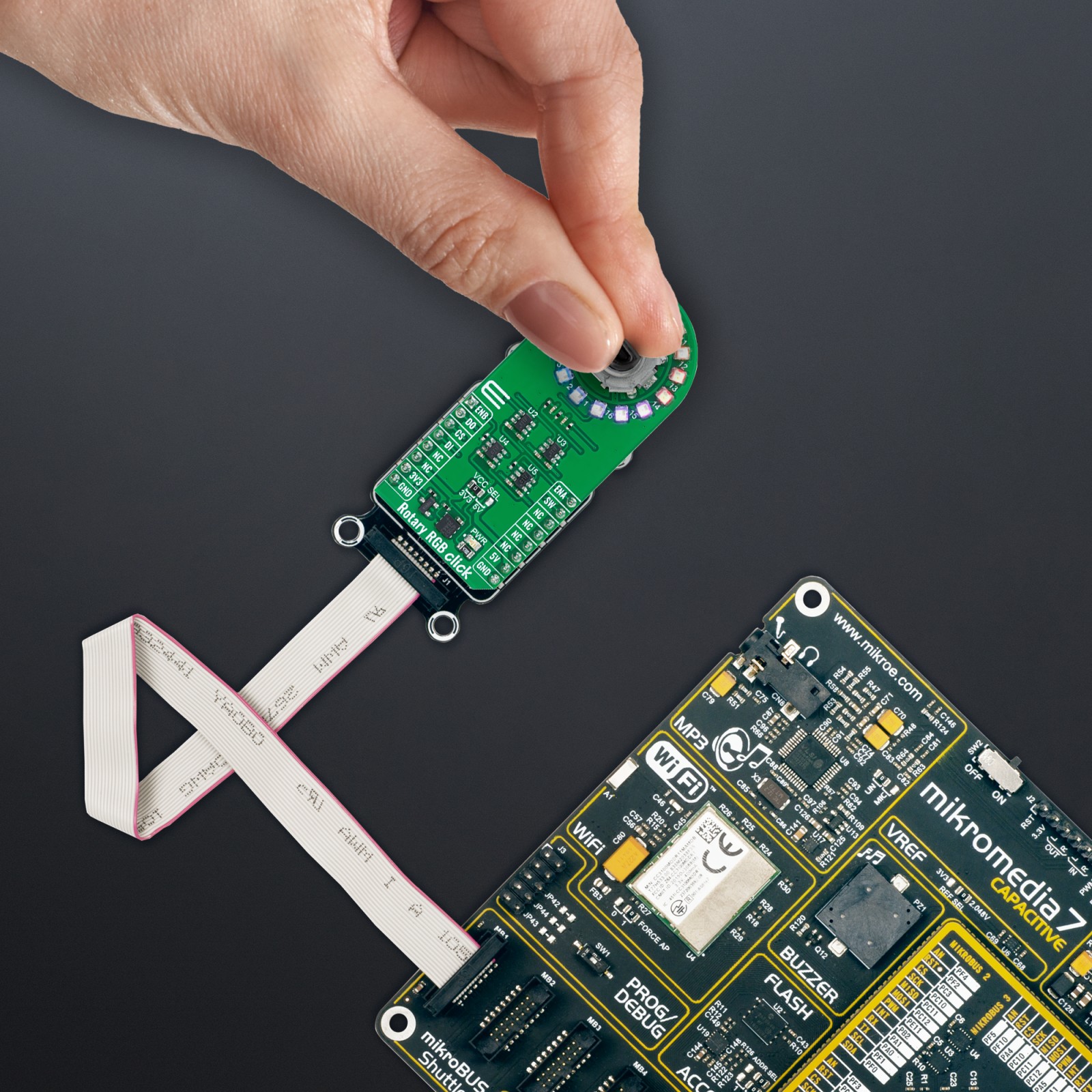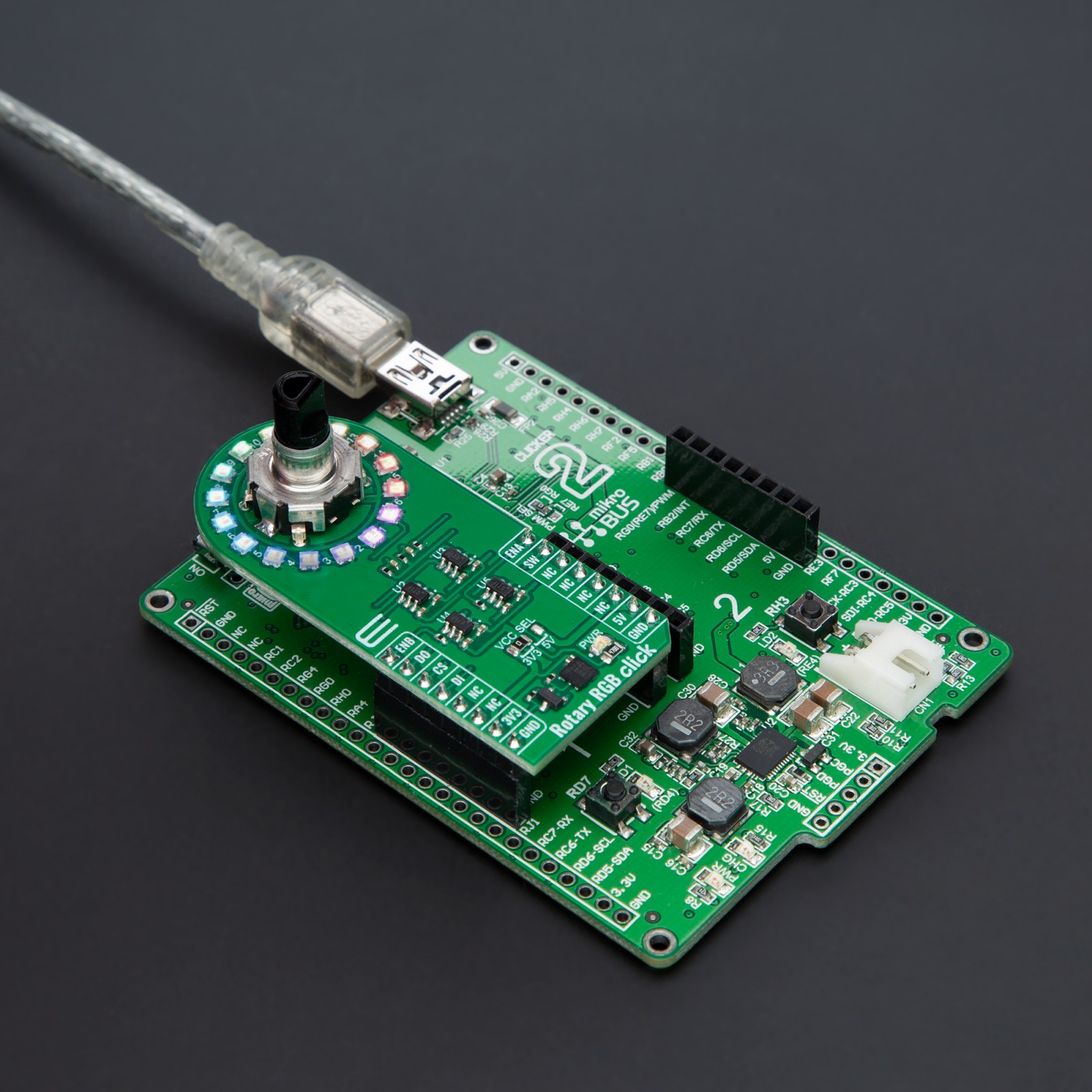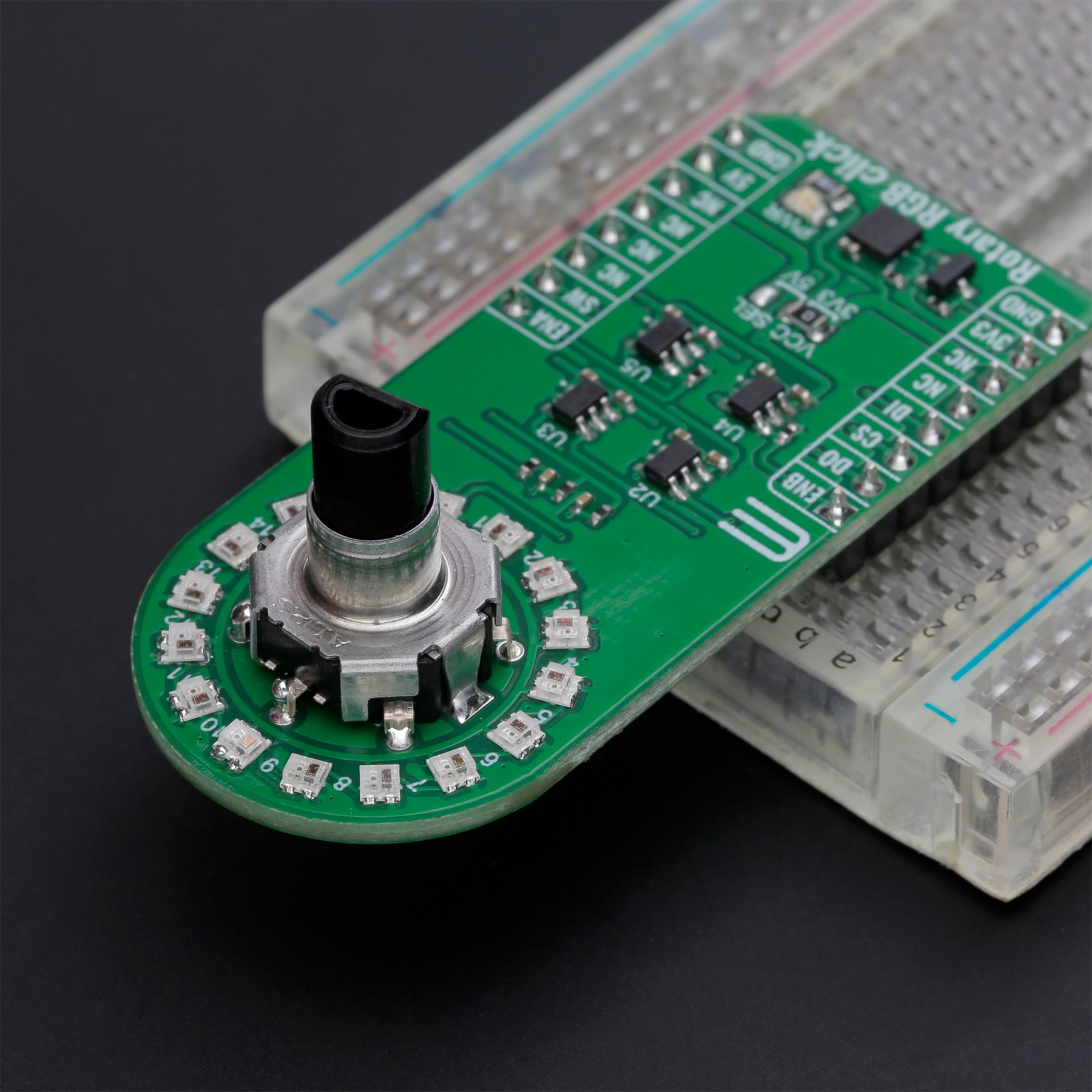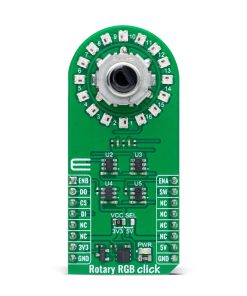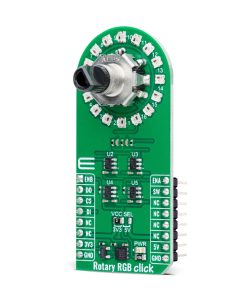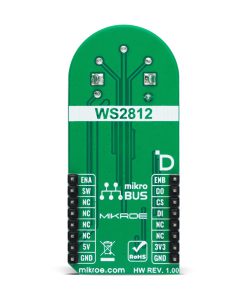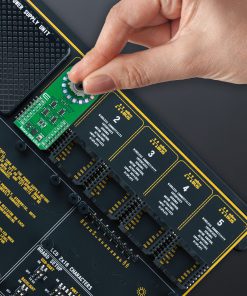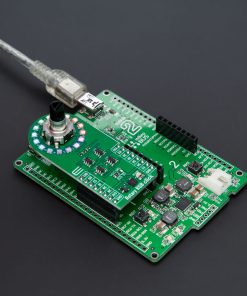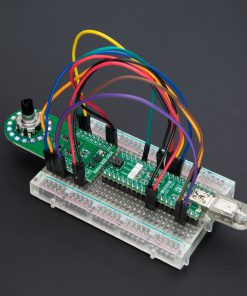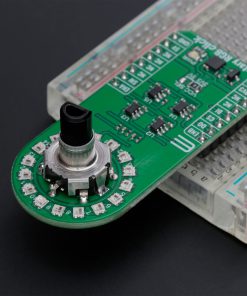Rotary RGB Click
R520.00 ex. VAT
Rotary RGB Click is a compact add-on board for creating visual effects and precise position indications. This board features 16 individual RGB LEDs (WS2812B-2020) from Worldsemi and a high-quality rotary encoder (EC12D1564402) from ALPS ALPINE. The WS2812B-2020 offers low driving voltage, high brightness, and excellent consistency, while the rotary encoder provides accurate 15-pulse incremental encoding with push-button functionality. This Click board™ also includes debouncing circuitry and logic-level translation, supporting both 3.3V and 5V systems. Ideal for applications requiring flexible position indication and visual feedback, Rotary RGB Click ensures reliable and efficient performance.
Rotary RGB Click is fully compatible with the mikroBUS™ socket and can be used on any host system supporting the mikroBUS™ standard. It comes with the mikroSDK open-source libraries, offering unparalleled flexibility for evaluation and customization. What sets this Click board™ apart is the groundbreaking ClickID feature, enabling your host system to seamlessly and automatically detect and identify this add-on board.
Stock: Lead-time applicable.
| 5+ | R494.00 |
| 10+ | R468.00 |
| 15+ | R442.00 |
| 20+ | R425.36 |

